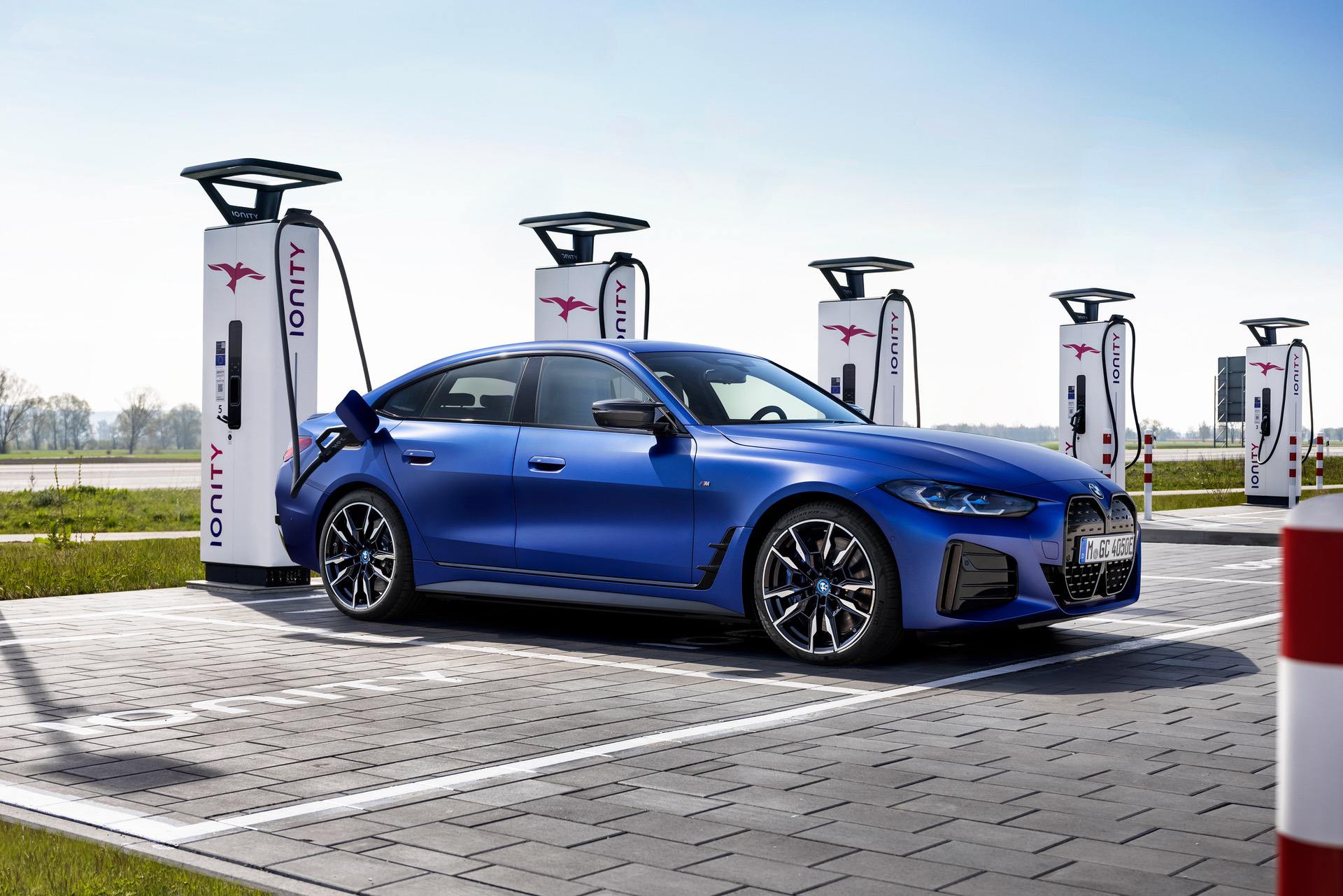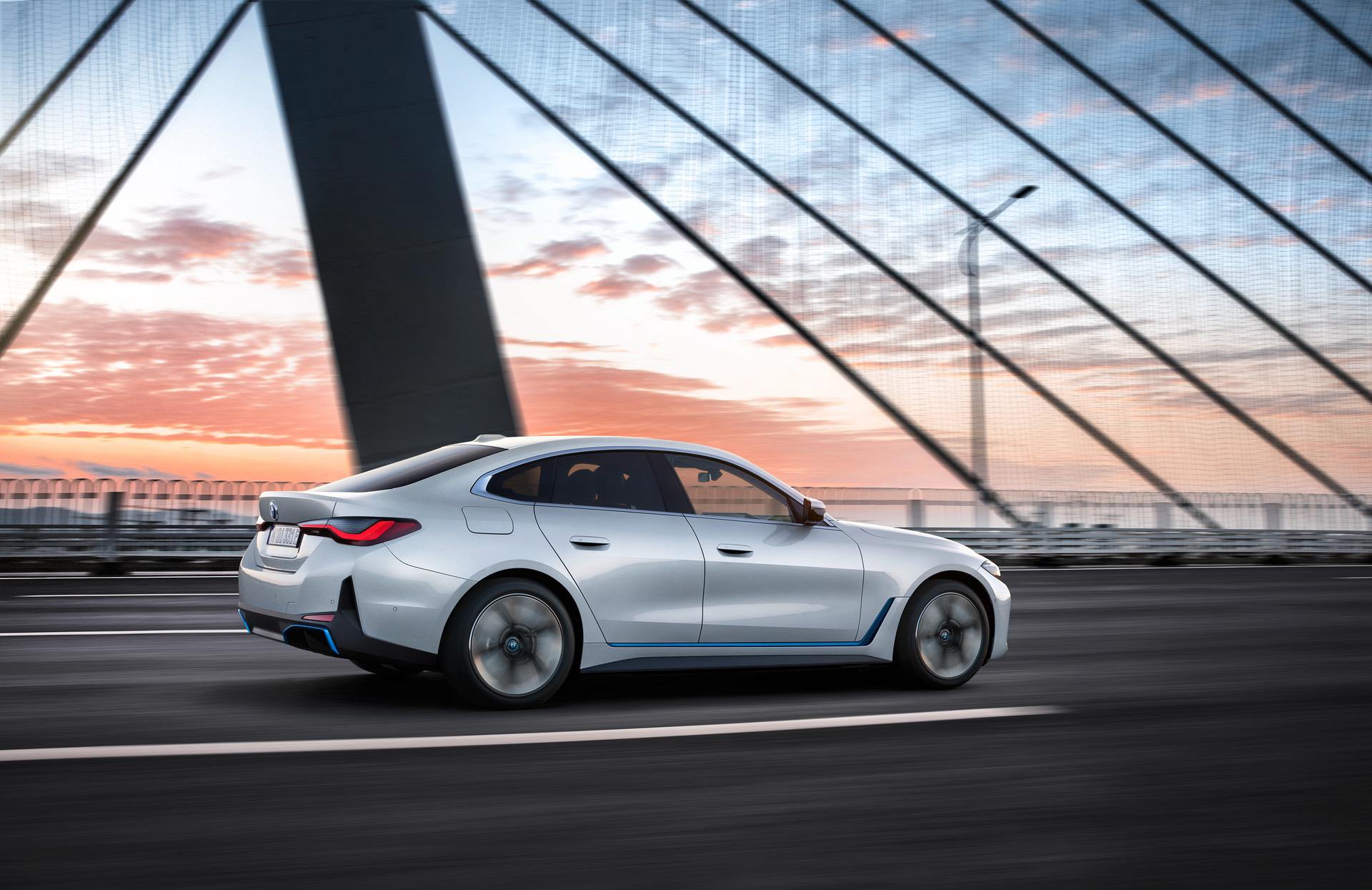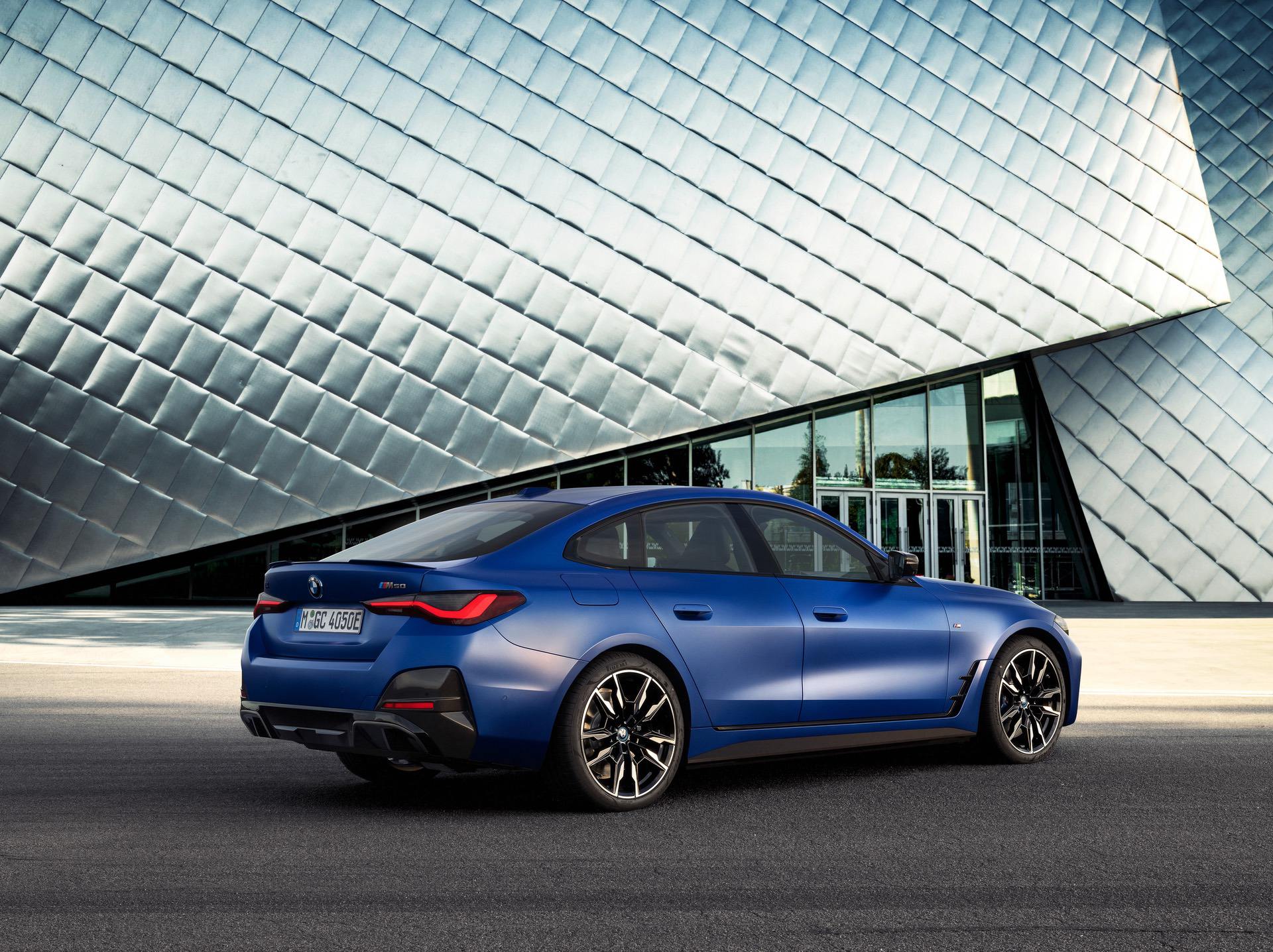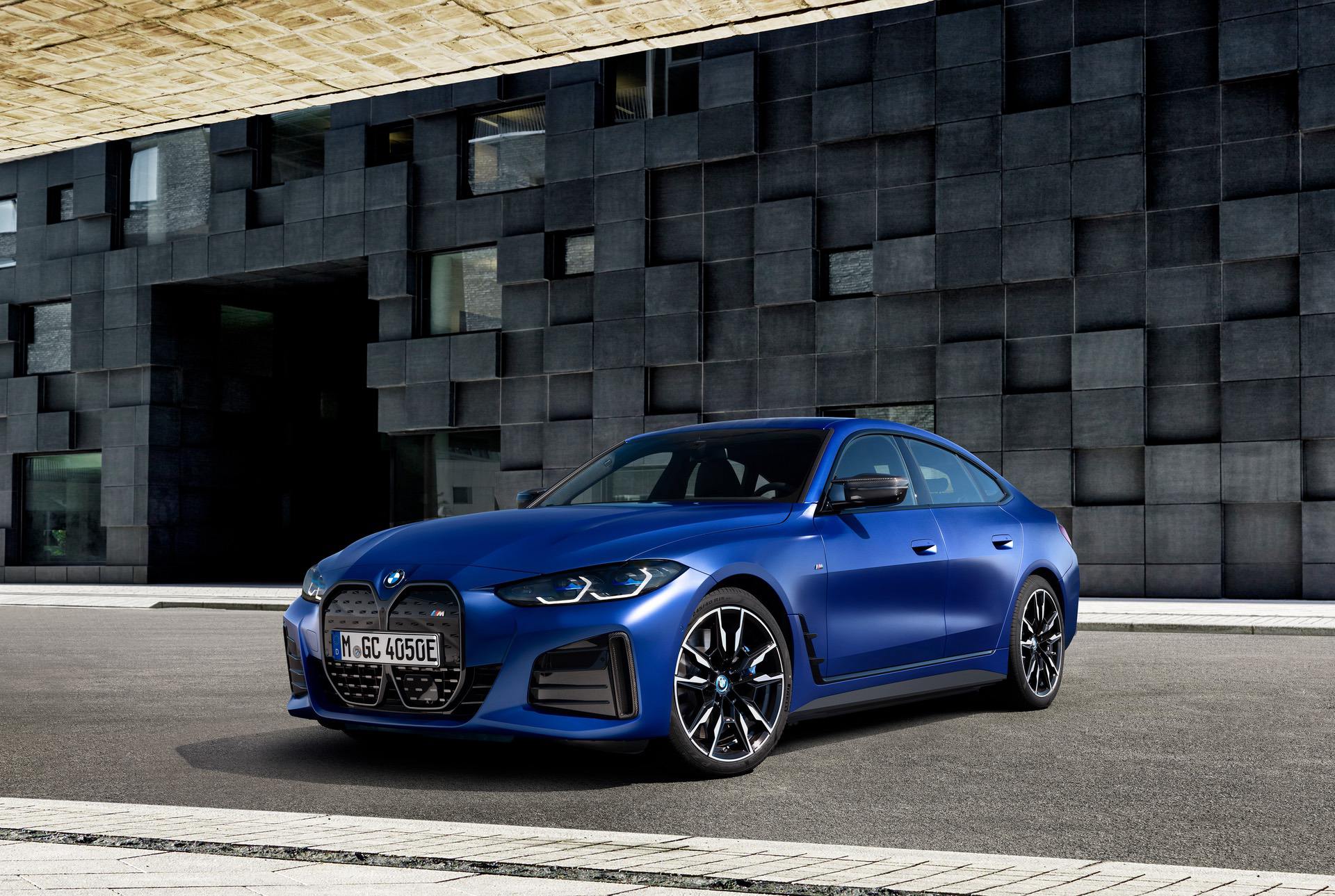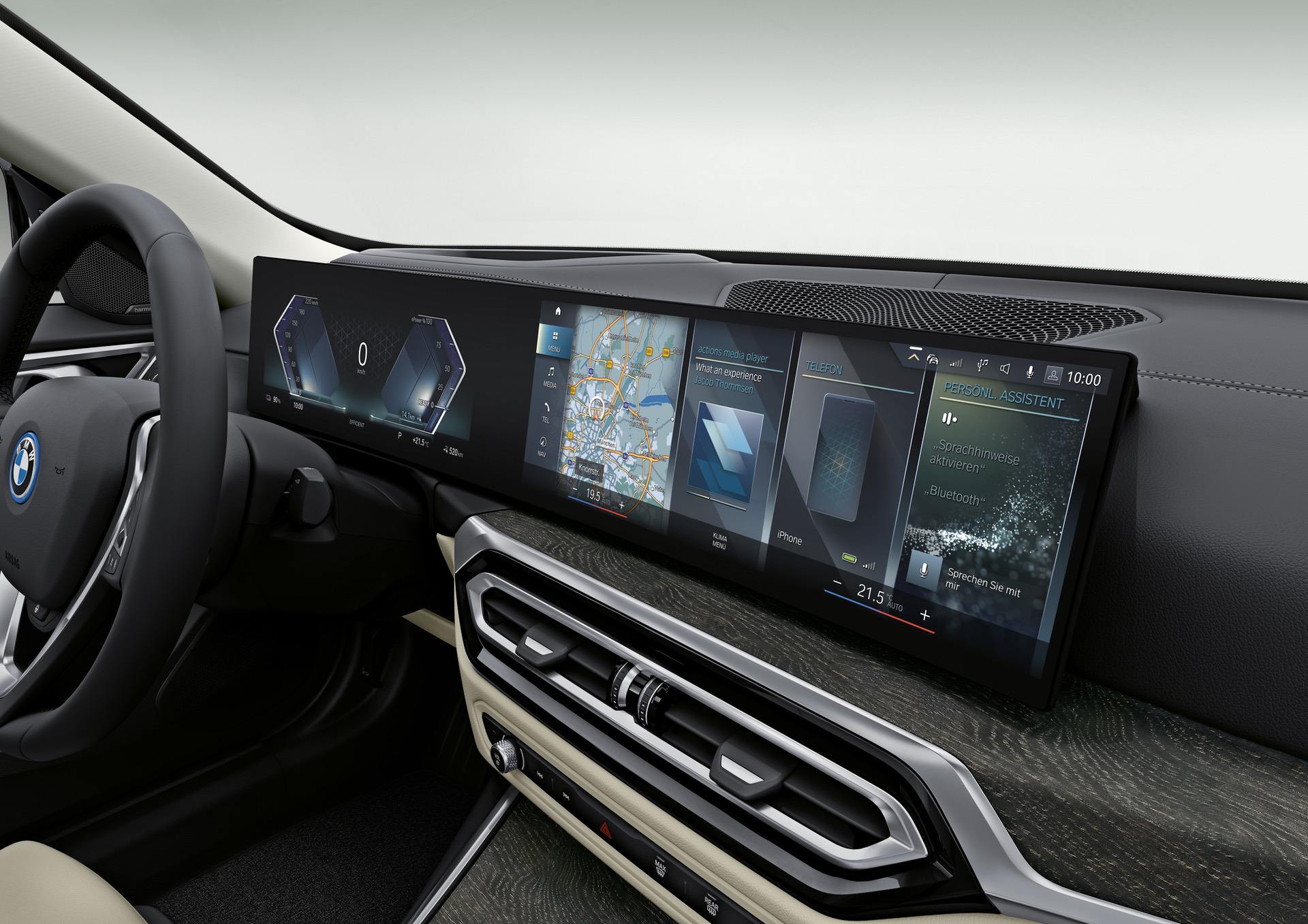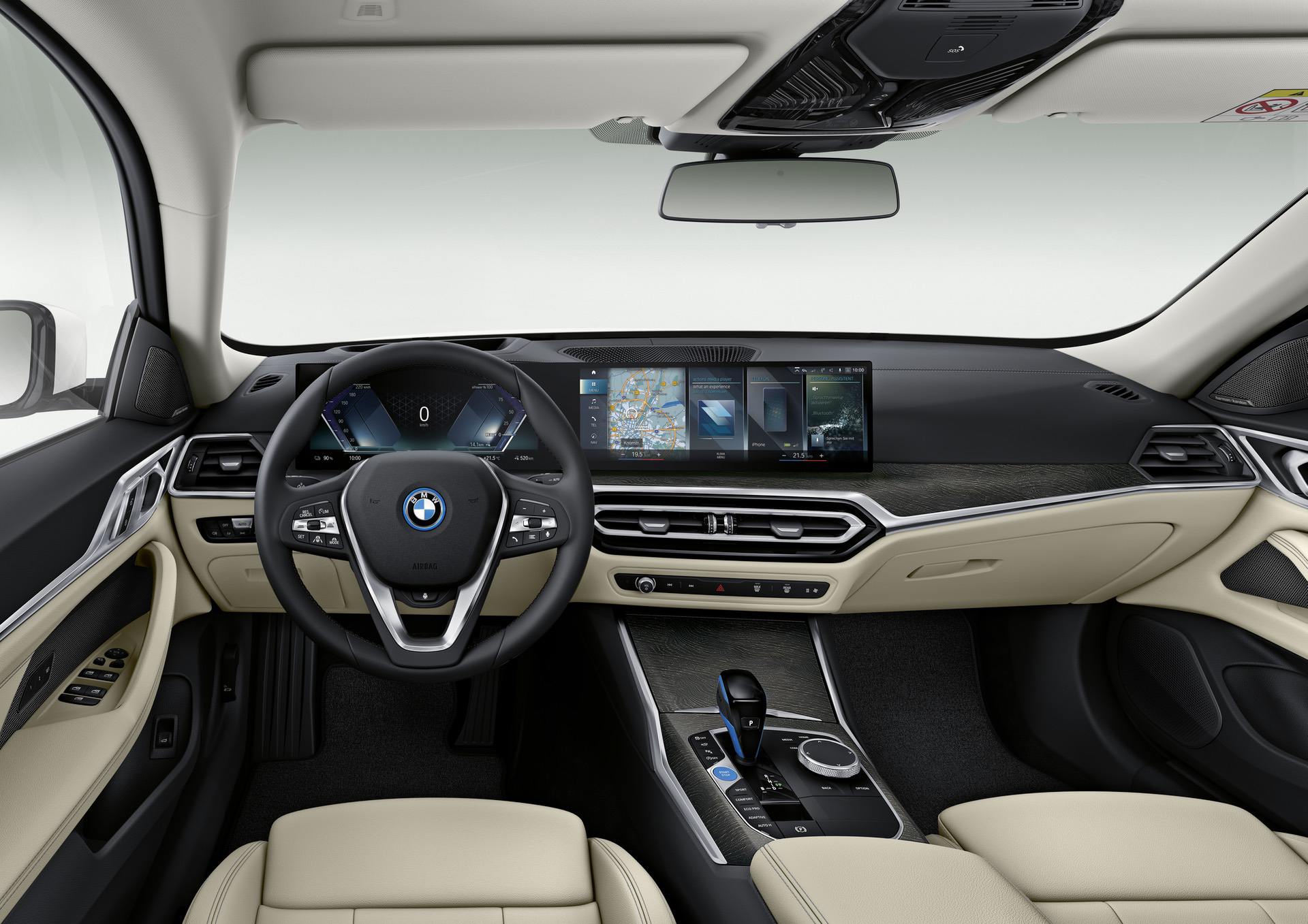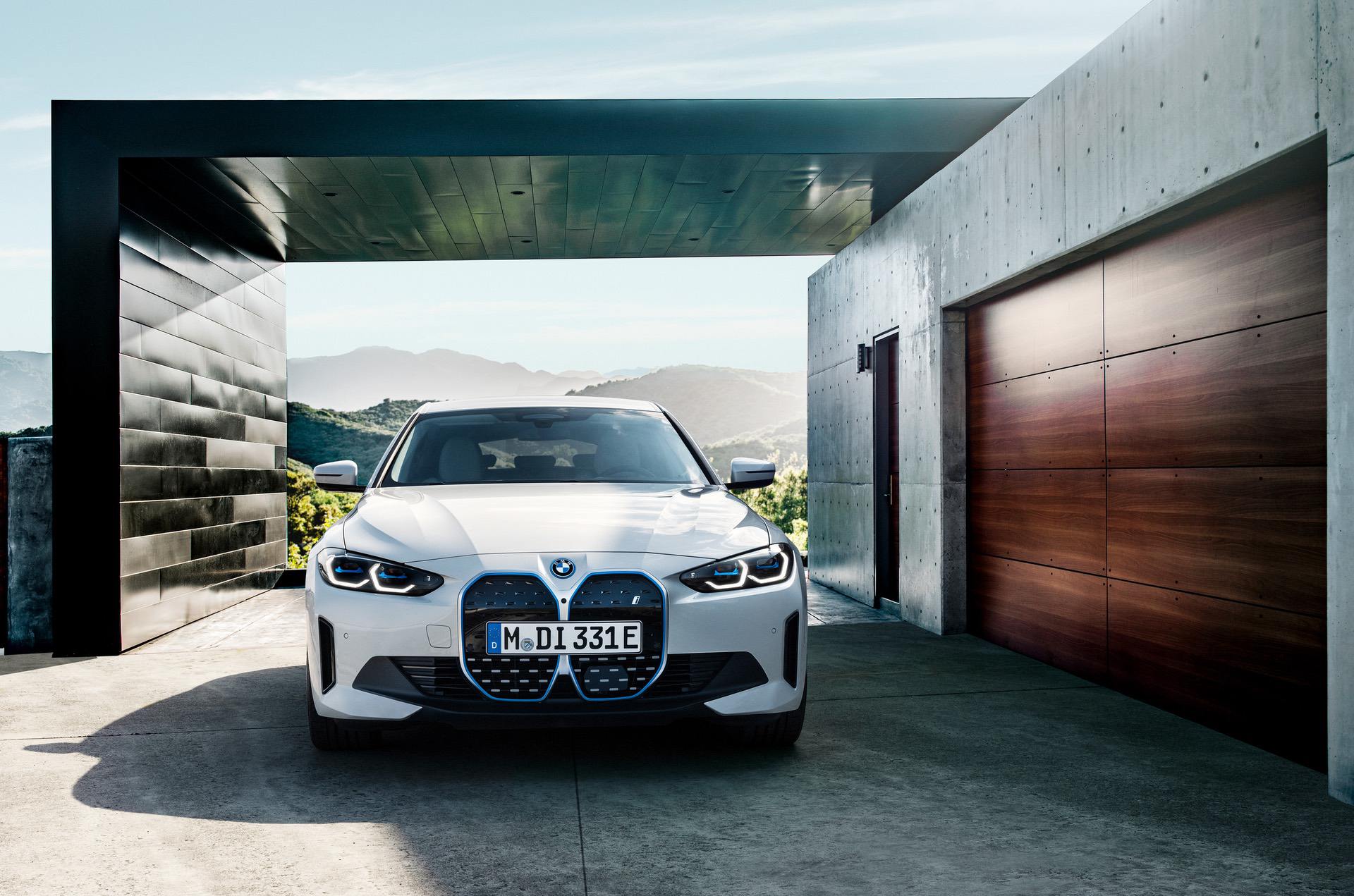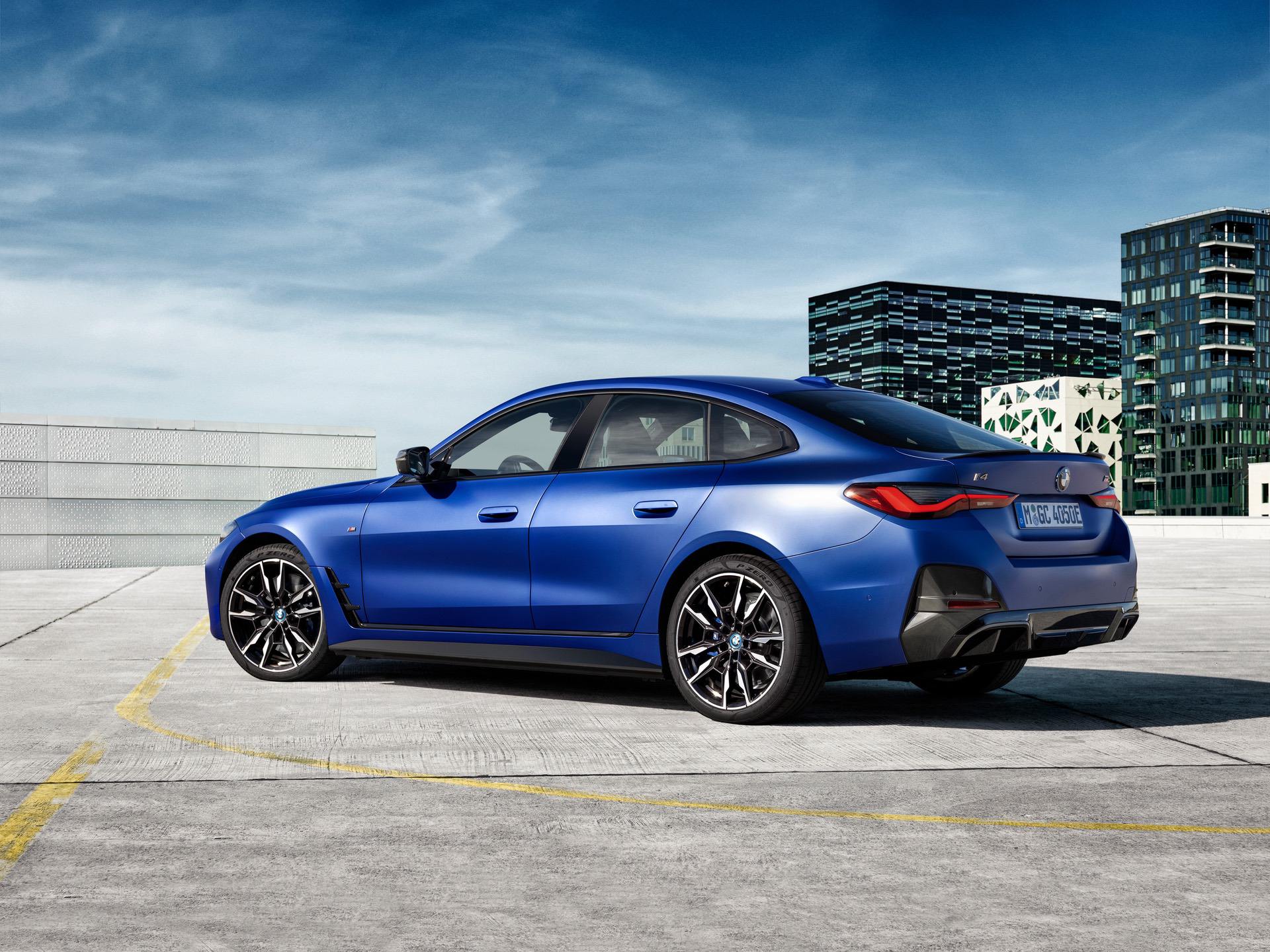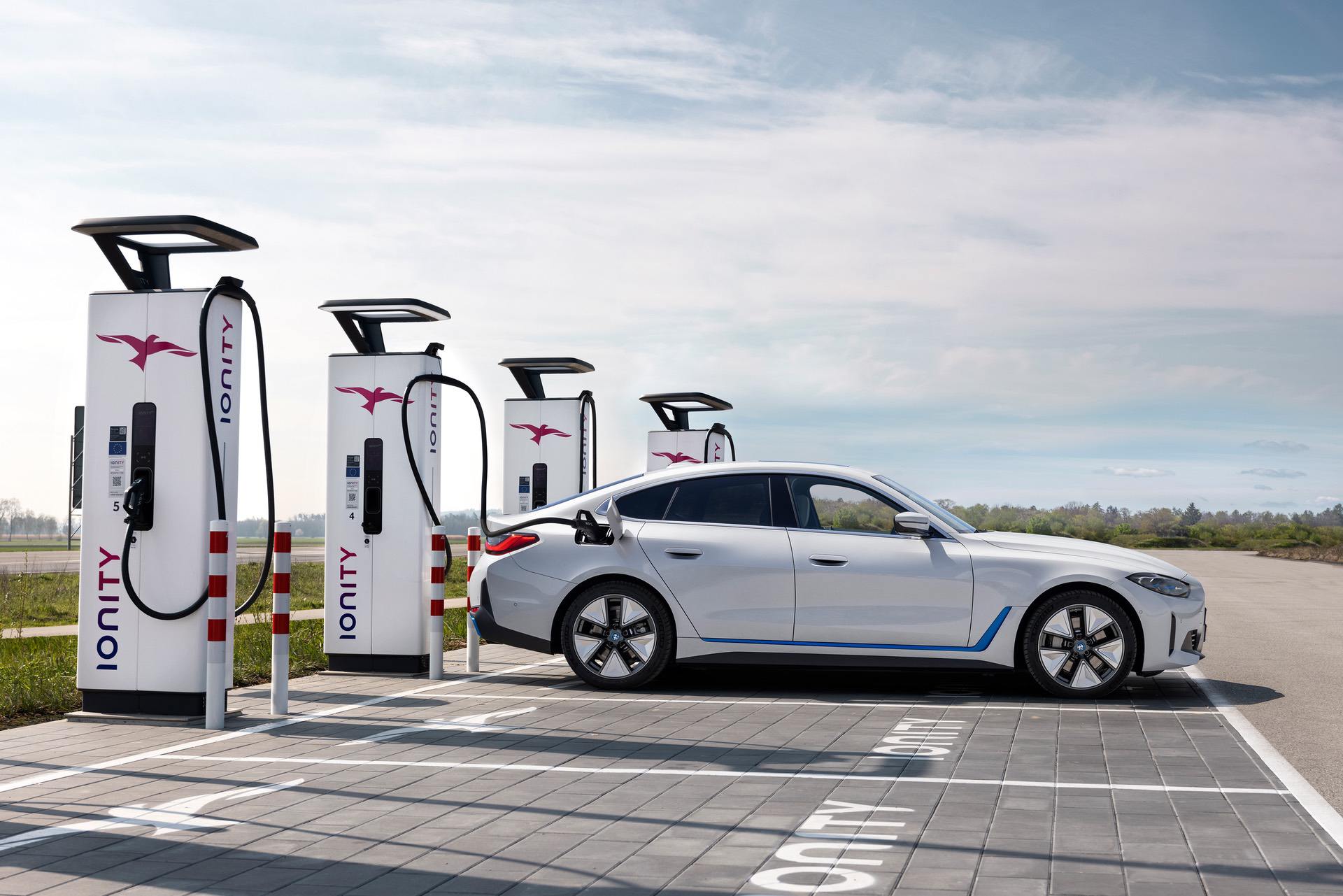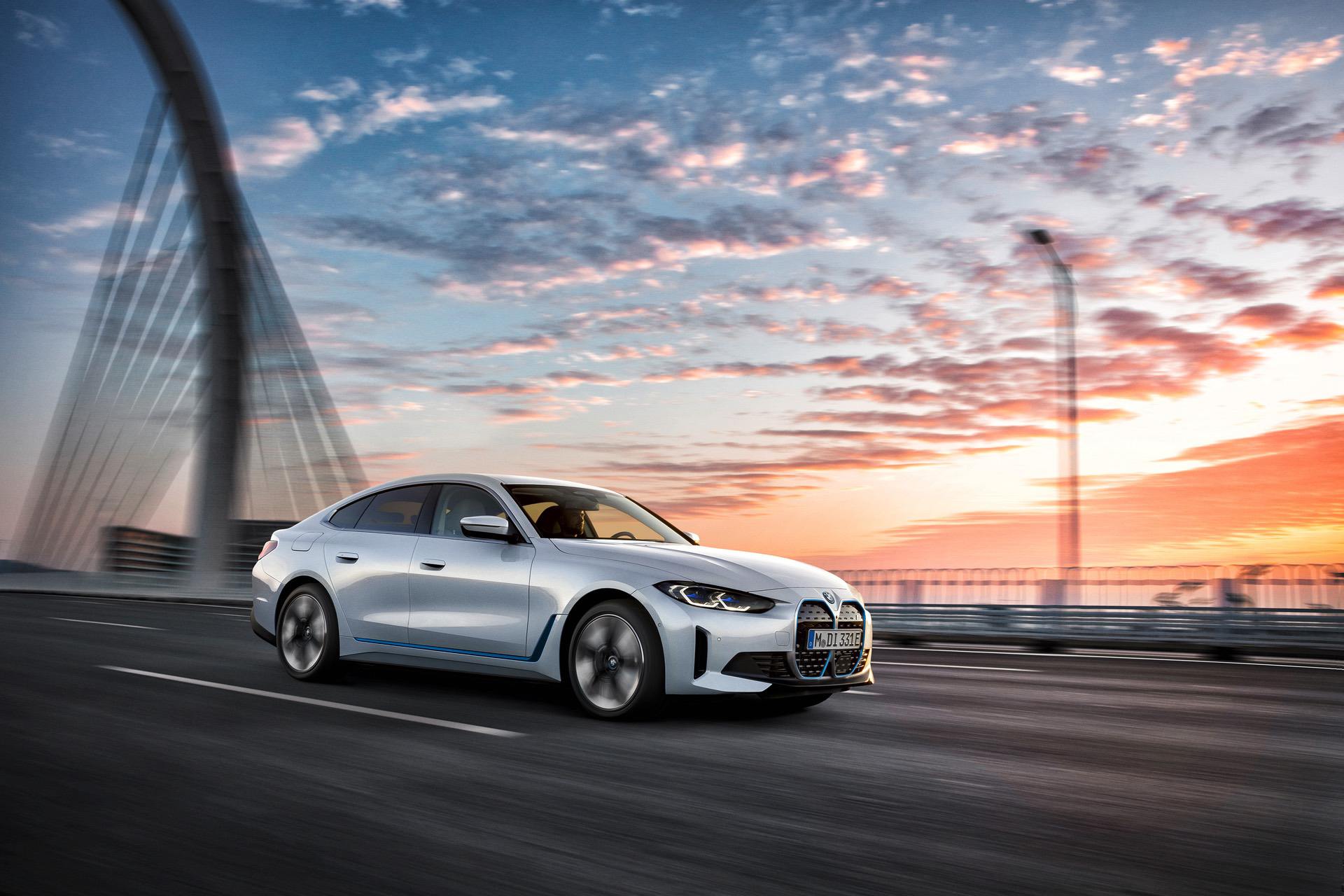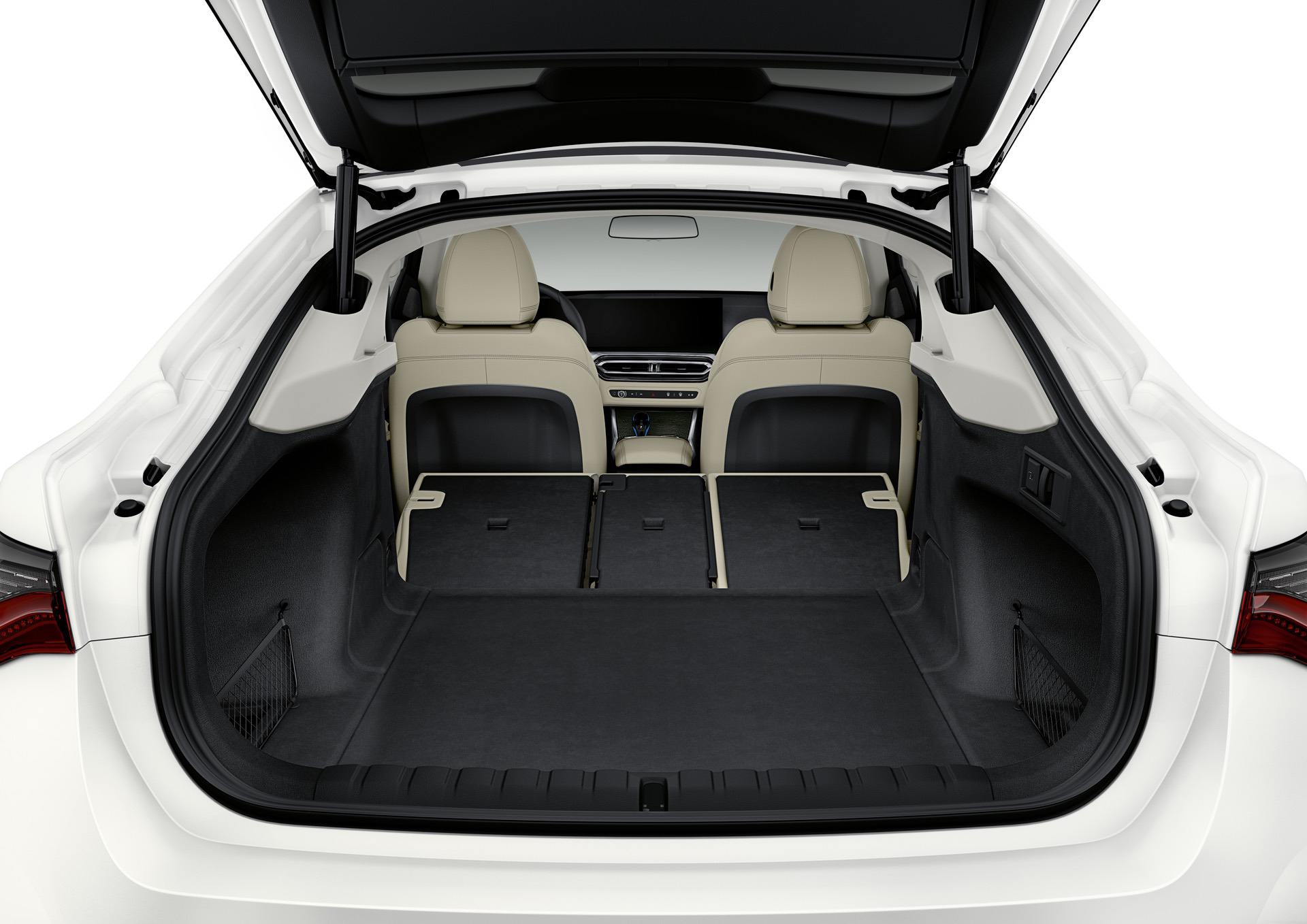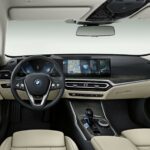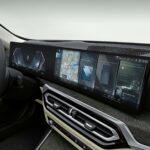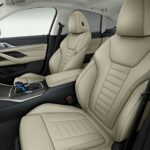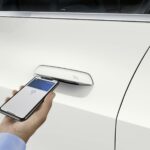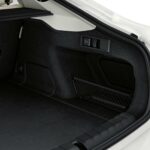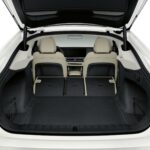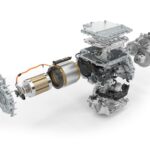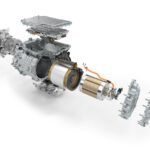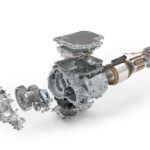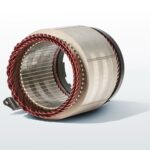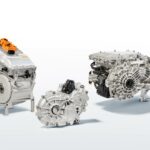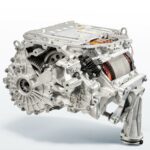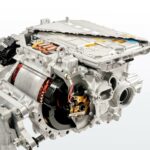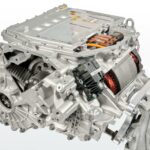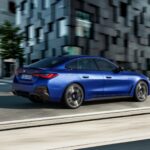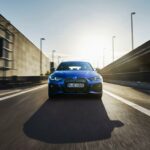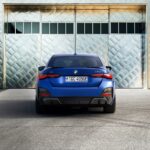Today is finally the day we get to see the BMW i4 in all of its glory. No hiding behind camouflage or fabric any longer. The i4 is here and it’s been a long time coming. BMW has been talking about the i4 — the car that’s supposed to finally take on Tesla — for what felt like a thousand years and now we get to know whether or not it truly can.
We’ve seen the outside already, or at least the gist of it. BMW released some exterior photos a while back but they were just of the meat and potatoes of the design. We didn’t get any close-up shots or rolling shots, nor did we see any of its interior. Now, we get it all, along with all of the geeky tech specs we’ve been waiting for. So will the BMW i4 properly compete with the Tesla Model 3?
A Familiar Design
From the outside, the BMW i4 looks very much like a traditional BMW. It has all the signature BMW elements — kidney “grille”, Hofmeister kink, and classic rear-drive proportions. Aside from its fake kidney grille and blue accents, you’d never know the i4 was anything other than a normal BMW. Now that the outgoing 4 Series Gran Coupe has become such a familiar shape, the i4’s roofline and tall rear deck don’t even look unusual anymore. The i4 is going to trick a lot of friends who won’t immediately realize your car is all-electric.
That ambiguousness was intentional. I’ve said it before but there seems to be two trains of thought when it comes to designing an electric vehicle; you can either go the full BMW i3 and create something funky, new, and futuristic, or you can dial it back and design something that looks like a traditional car. The reason for the former is that you can create something unique and special, but with the latter you’re trying to cater to existing customers and convert them over to electric. It’s clear that BMW took the latter approach with the i4.
M-Tuned BMW i4
I also applaud BMW for developing an M Performance variant of the i4 and giving it typical M Performance looks. Any current BMW customer will feel right at home with the i4 M50, understanding that it’s the sporty model and the one that looks more special. When it comes to EVs, that sort of distinction is going to be important in converting legacy buyers, who like to see the sportier, sexier model in the showroom. Especially for customers who want to compete with the Tesla Model 3 Performance, as that looks is almost indistinguishable from the standard Model 3, on the road.
Speaking of the BMW i4 M50, it looks quite good, especially in Portimao Blue, a classic M Performance color. Its proportions are right, its overall shape is typical of a BMW Gran Coupe, the 4 Series taillights work on a larger sedan, its flush door handles look great, and even its aero wheels are really cool.
It also has a center of gravity 1.3 inches lower than the standard 3 Series but what’s interesting is that the entry-level BMW i4 40, has an even lower center of gravity, being 2.1 inches lower. It also has slighter wider wheel tracks, front and back, than the 3er. So it should be more nimble.
Let’s talk about the beaver in the room, though. Yes, the BMW i4 still has the same controversial grille design as the 4 Series, M3, and M4. However, on the i4, it’s not actually a grille. Instead, it’s an “Intelligence Panel”, which houses all of the i4’s sensors for its autonomous driver aids. It’s not a functional grille, which makes the controversial design entirely superfluous, so it will be interesting to see how customers react.
A Minimalistic Interior
This is the first time we’re seeing the interior, though, and it’s not at all surprising, though it is a bit disappointing compared to the concept car’s interior. The BMW i4 Concept had a mind-blowing, futuristic interior that looked like something out of science fiction. The actual BMW i4 interior, though, is far less exciting.
Inside the i4, you’ll find a cabin very similar to that of any 3 Series or 4 Series. There are some differences but anyone that’s been inside either of the aforementioned cars will feel right at home. Again, though, intentional, as the idea is to convert 3 Series customers. Keeping the interior familiar is a good way to do that, at least in theory. Time will tell how well that method works.
The differences are impressive, though. Instead of BMW’s current driver’s display and iDrive screen setup, BMW has now combined both into on giant panel, with two separate digital screens built in. The driver’s display looks similar to the gauges you’ll see in any other current Bimmer but it features more futuristic graphics, a bit more customization, and a cleaner design. While the new iDrive system is a complete overhaul, featuring an entirely new UI, added functionality, fantastic looking graphics, and a revised menu system. This is the biggest iDrive jump to date and it looks like it could also be the best.
BMW iDrive 8 powers the entire infotainment system. The new BMW iDrive 8 was designed with a focus on dialogue-based interaction using natural language and on touch operation. There are also new features which expanded capabilities of the BMW Intelligent Personal Assistant, which uses a new graphic to communicate with the vehicle’s occupants.
Additionally, BMW added Apple and Google Maps to the head-up display, which is a wonderful new feature. It also gets BMW IconicSounds for the powertrain sound, co-developed by Hans Zimmer and Renz Vitale.
It also gets the same hatchback trunk as the 4 Series Gran Coupe had and will continue to have with the upcoming second generation. The hatchback is a feature that all 4 Series Gran Coupe customers love and one of the main reasons they choose it over the 3 Series. So the fact that it’s staying for the BMW i4 will help existing Gran Coupe customers make the jump.
Aside from those things, though, there really isn’t much else different inside the i4. Again, BMW is aiming for conversion, so keeping things familiar is important. Though, anyone hoping for something revolutionary will be disappointed.
Two Flavors To Start With
Let’s talk specs, though. The BMW i4 will come in two flavors; i4 40 and i4 M50. The entry-level BMW i4 40 will be the electric equivalent of a BMW M440i-ish, while the BMW i4 M50 will sort of take on an M4 Gran Coupe role. For all the fans that have been begging BMW to make a proper M4 Gran Coupe, here’s your car. It might be electric and go by a different name but it scratches the same itch –a high-performance 4 Series Gran Coupe.
The BMW i4 eDrive40 uses a single, rear-mounted electric drive unit that makes 335 horsepower and 317 lb-ft of torque. It will have a range up to 300 miles and a 0-60 mph time of around 5.7 seconds. So it packs M440i-ish power but has the performance of a 430i. Not that exciting in terms of outright speed but it’s right in line with a standard Tesla Model 3.
However, the big-daddy BMW i4 M50 gets a whopping 536 horsepower and 586 lb-ft of torque. That means the most powerful 4 Series of all is not only electric but also not even a true M Division product. According to BMW, max range is around 235 miles and 0-60 mph happens in 3.9 seconds. That makes it more powerful than the Model 3 Performance but, likely due to weight, a bit slower on paper.
The i4 M50 also gets a SPORT Boost function increasing the system’s combined drive power by 67 hp to its maximum of 536 hp for over ten seconds. At the same time, combined torque is upped by 48 lb-ft to 586 lb-ft. The extra burst of acceleration is accompanied by an M-specific soundtrack.
The i4 delivers a drag coefficient (Cd) of just 0.24 for the i4 eDrive40 and 0.25 for the i4 M50. The active air flap control reduces the car’s aerodynamic drag even further. The flaps can be adjusted in ten stages.
Both cars get an 81.5 kWh net-energy battery pack (f 83.9 kWh gross) that’s as sustainable as absolutely possible. The high-voltage battery in the i4 is comprised of four modules with 72 cells each and three 12-cell modules.
The battery contains less than 10-percent cobalt and all of the rare Earth material mining, including the Australian-sourced lithium, is overseen by BMW. The rare Earth materials are then sent by BMW to the battery cell suppliers, to ensure that all of the materials made to use the batteries are being sourced responsibly and in as much of an environmentally friendly manner as possible.
The BMW i4 features a new integrated heating a cooling system, with a heat pump, that’s 75-percent more efficient than the i3’s system. It also gets adaptive regenerative braking, which adapts to your driving style, as well as GPS information. The interior climate controls are also adaptive and can adjust to the amount of passengers, as well as their location, to save energy.
Fastest Charging BMW
Speaking of energy savings and recuperation, the BMW i4 is the fastest charging Bimmer yet, along with its new BMW iX sibling. The i4 can charge at up to 200 kW, with a compatible DC fast charger. At that speed, the BMW i4 40 can recharge 102 miles of range in just ten minutes, while the i4 M50 only gets 87 miles of range in the same time. It can also charge at 11 kW from a Level 2 home charger, which will take eight hours to fully charge the battery. Though, that’s perfect for an overnight fill up.
Steering and Suspension
The standard Servotronic speed-sensitive power assistance offers two settings – one very direct and one more comfortable – that form part of the overall vehicle set-up activated by the driver using the Driving Experience Control switch. Variable sport steering, which is optional on the BMW i4 eDrive40 and standard on the BMW i4 M50 combines the Servotronic function with a speed dependent variable rack ratio which makes the car nimbler when parking while increasing agility at moderate speeds and steering stability at higher speeds.
The BMW i4 is equipped with standard lift-related shock system that generates linear damper force according to the changing spring travel, resulting in improved damping response. Extra hydraulic damping on rebound at both the front and rear axle prevents excessive body dive when driving over large bumps.
The optional adaptive M suspension (standard in the BMW i4 M50) allows the driver to adjust the shock setting to suit the driving situation and their personal preferences. Both i4 models also include a rear air suspension, whose automatic self-levelling feature keeps the car at a constant ride height when carrying a heavy load.
Three Different Size Wheels
The BMW i4 eDrive40 is fitted with standard 18-inch light-alloy wheels while 19-inch wheels are optional. The BMW i4 M50 includes 19-inch M light-alloy wheels with mixed-size tires. Additional 19-inch and 20-inch wheels are optional. A more advanced version of BMW’s standard Tire Pressure Monitor is found on the i4. The system’s sensors relay data on tire pressure and temperature for each individual wheel, which is then processed to generate corresponding readouts in the Control Display. The Tire Pressure Monitor also factors in specific data on the tires fitted, including manufacturer, dimensions and production date, which can now for the first time be scanned from a QR code at the factory or service partner.
A digital tire diagnosis function helps advise the owner of tire wear by processing the data from the Tire Pressure Monitor in the BMW backend together with the pressure, temperature and wheel speed readings to forecast the remaining tire life.
Standard Features and Options
The BMW i4 is fitted with standard acoustic glazing for the windshield. An automatically dimming rear-view mirror and heated exterior mirrors. The standard BMW Live Cockpit Professional fitted as standard in the BMW i4 includes an audio system with ten speakers and a 205-watt amplifier. The Harman Kardon surround sound system, complete with 16 speakers and a digital seven-channel amplifier delivering 464 watts of audio power is optional.
Developed specially for electrified BMW vehicles, the Acoustic Pedestrian Protection is artificially generated and emitted through exterior speaker. The sound is active up to driving speeds of 19 mph.
The Most Important New Model For The Brand
The BMW i4 might not look like a revolutionary car for BMW, with traditional looks and familiar design elements. Don’t be mistaken by its reserved styling, though. The BMW i4 is the most important car for the brand moving forward and is packed with the right amount of tech to allow customers to make that jump over to electrification. It might not look revolutionary, but it certainly is for BMW.
The U.S. market launch is expected in Q1 of 2022. The BMW i4 eDrive40 starts with an MSRP of $55,400 and $65,900 for i4 M50. Plus $995 Destination.

